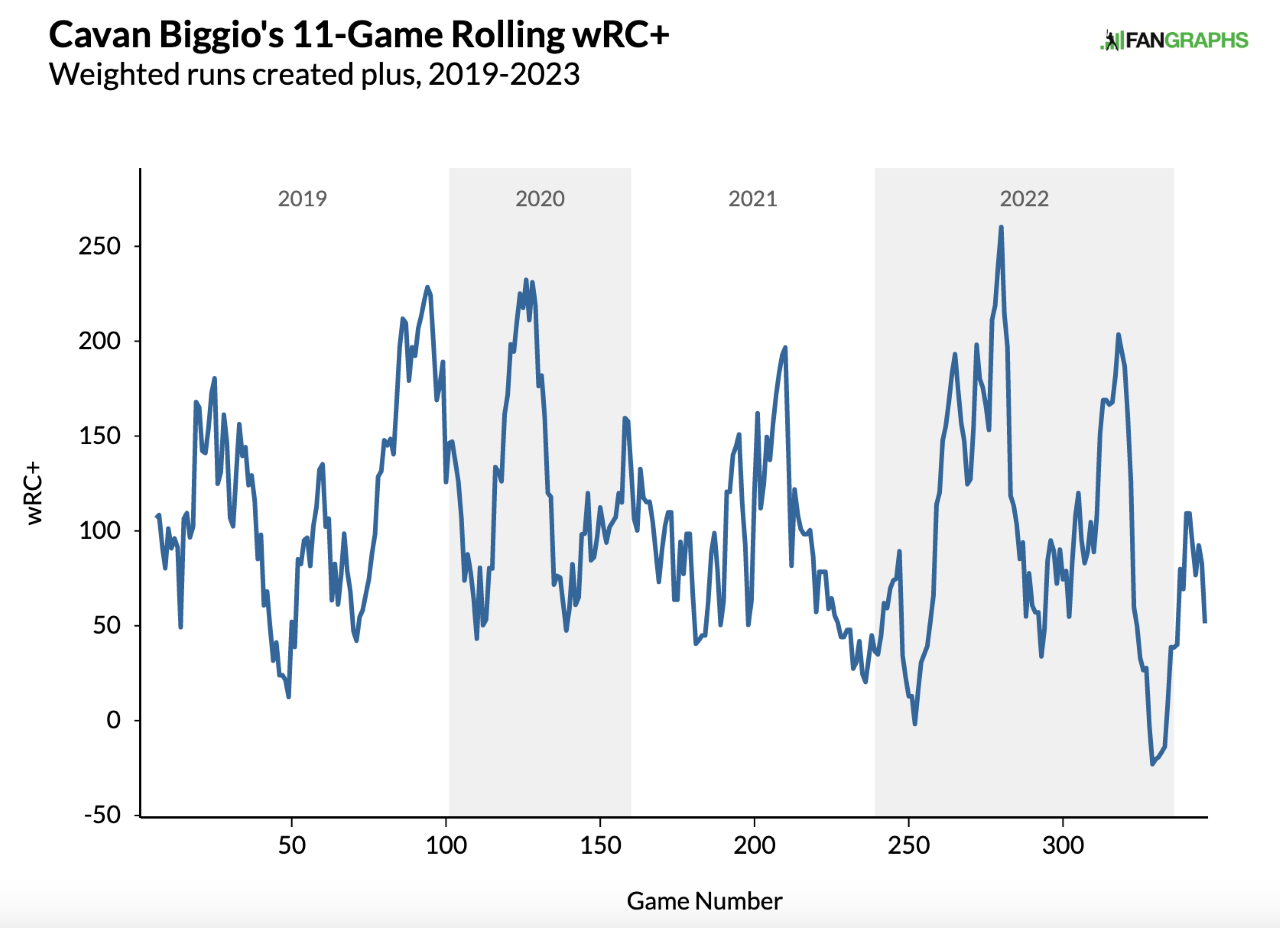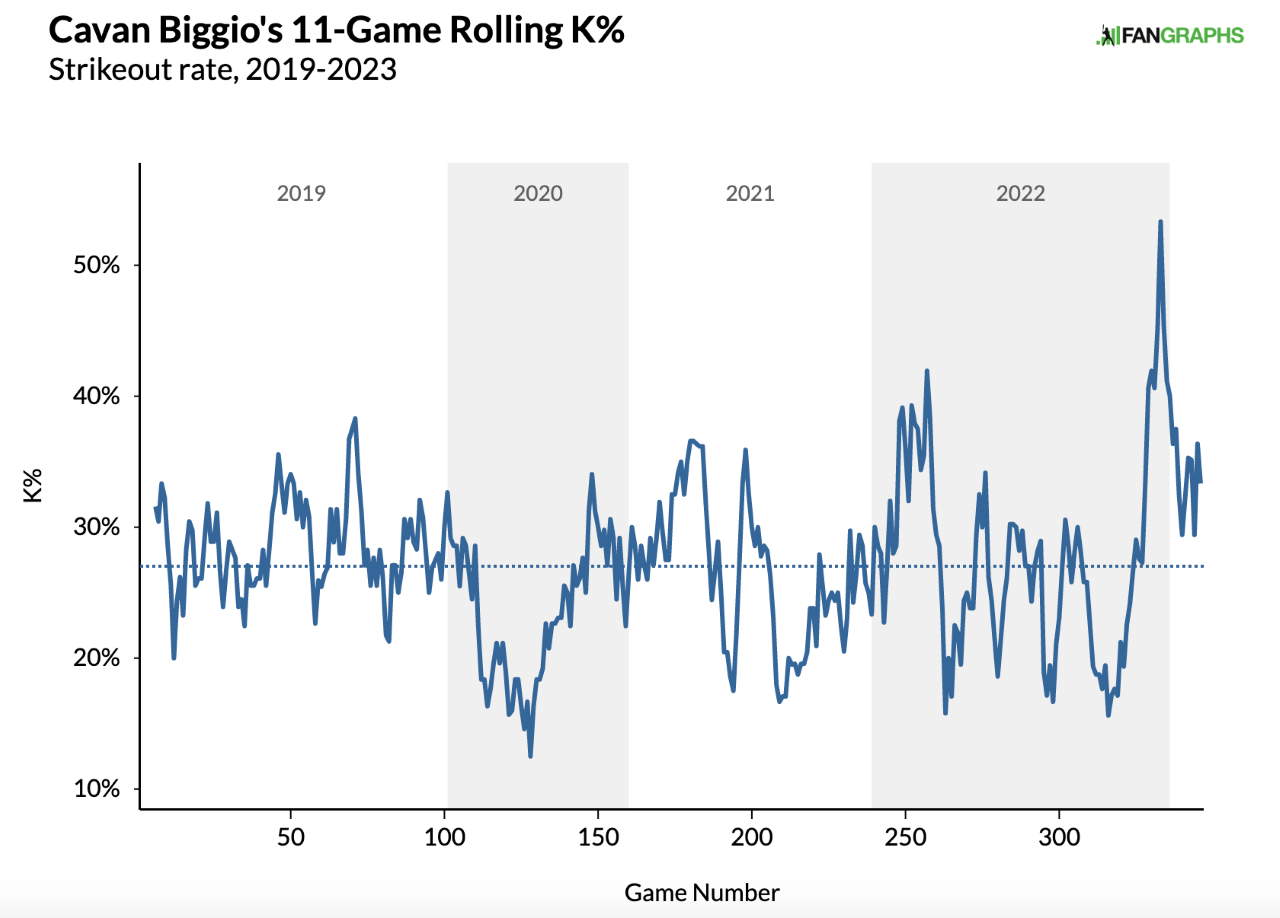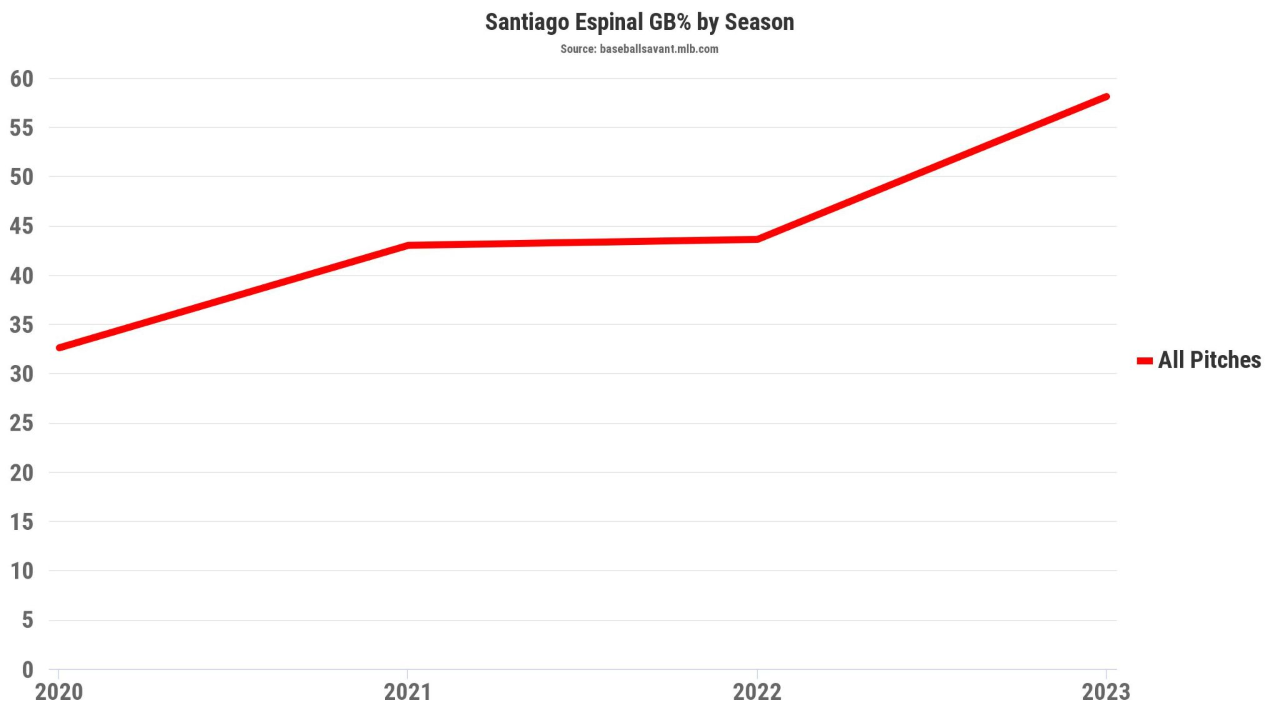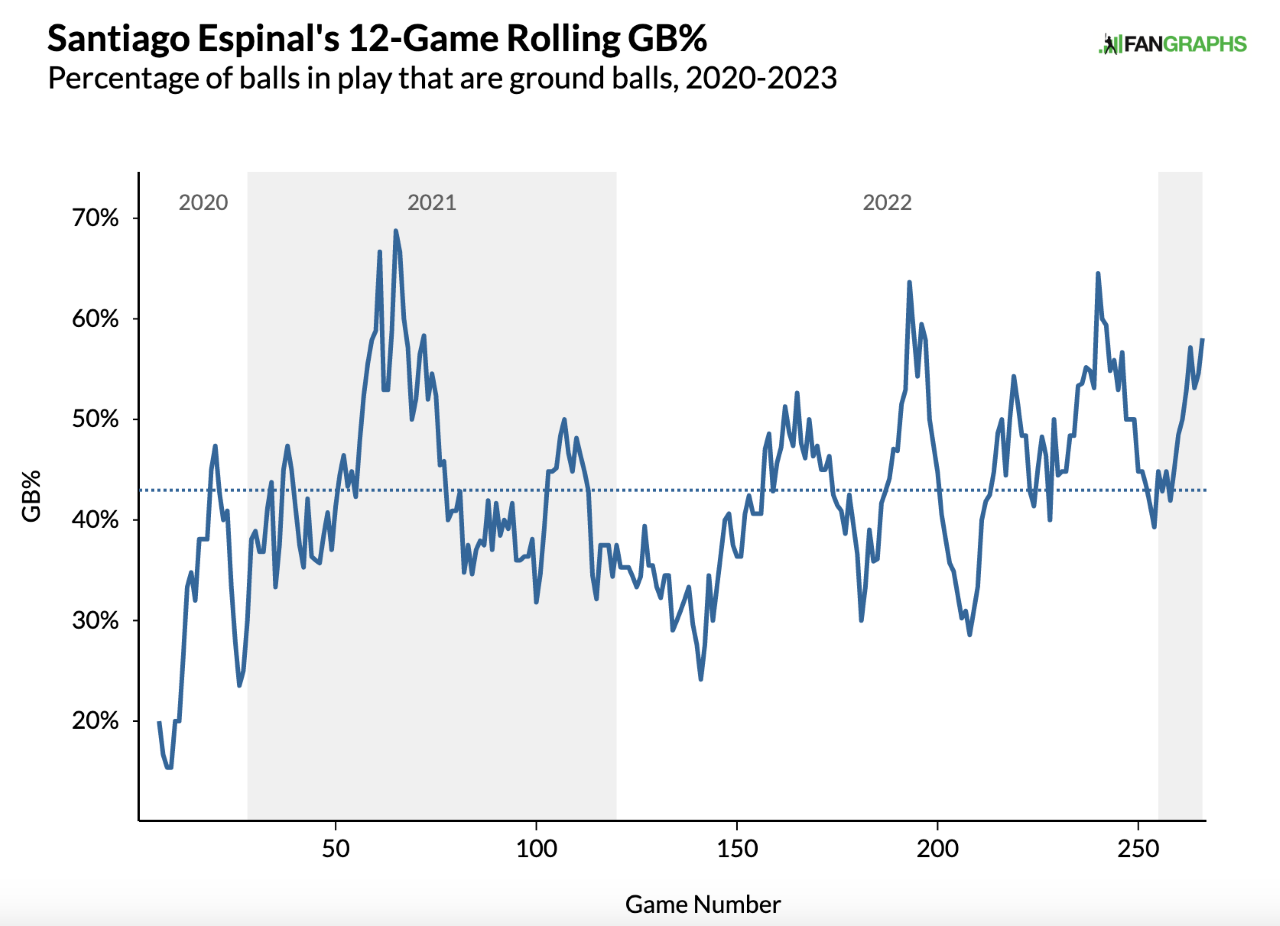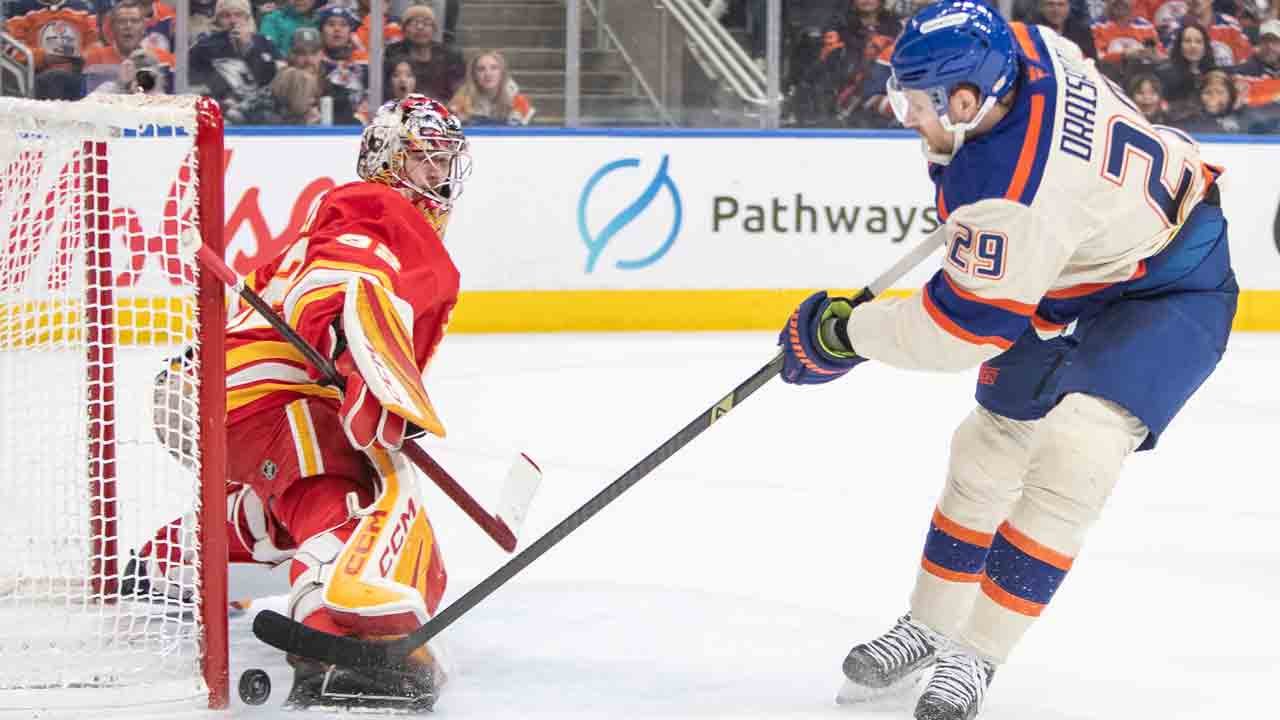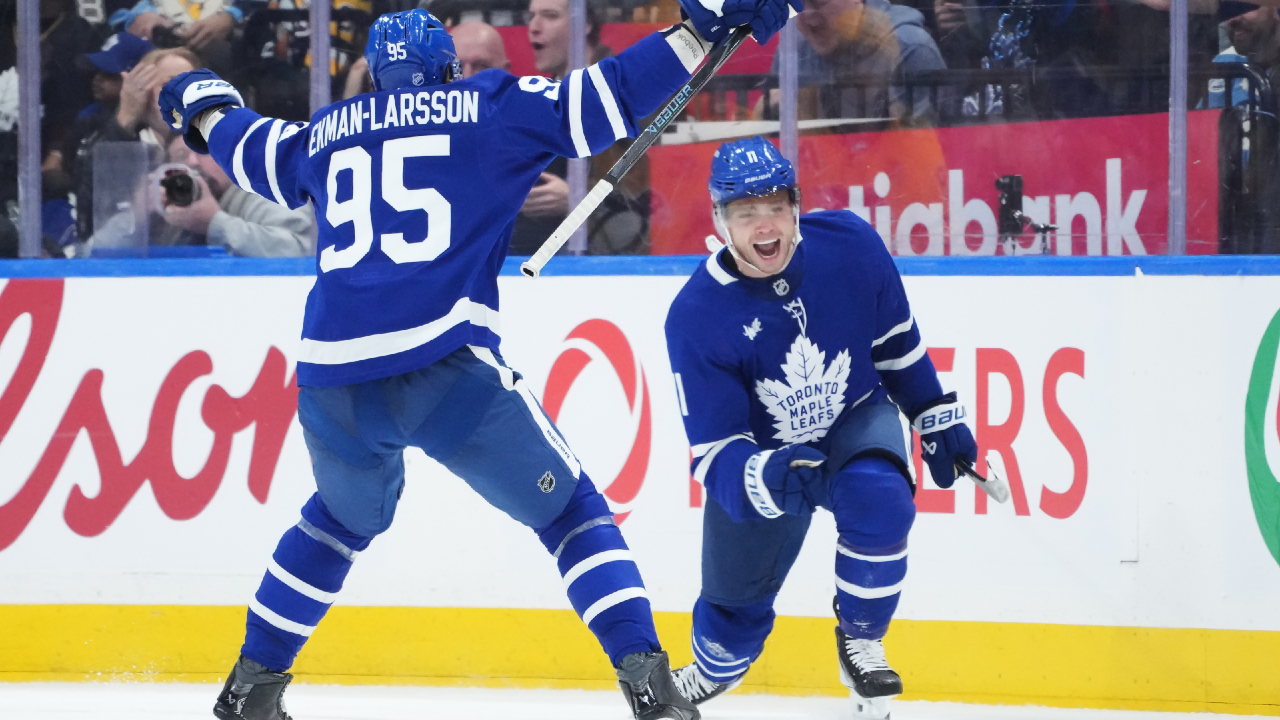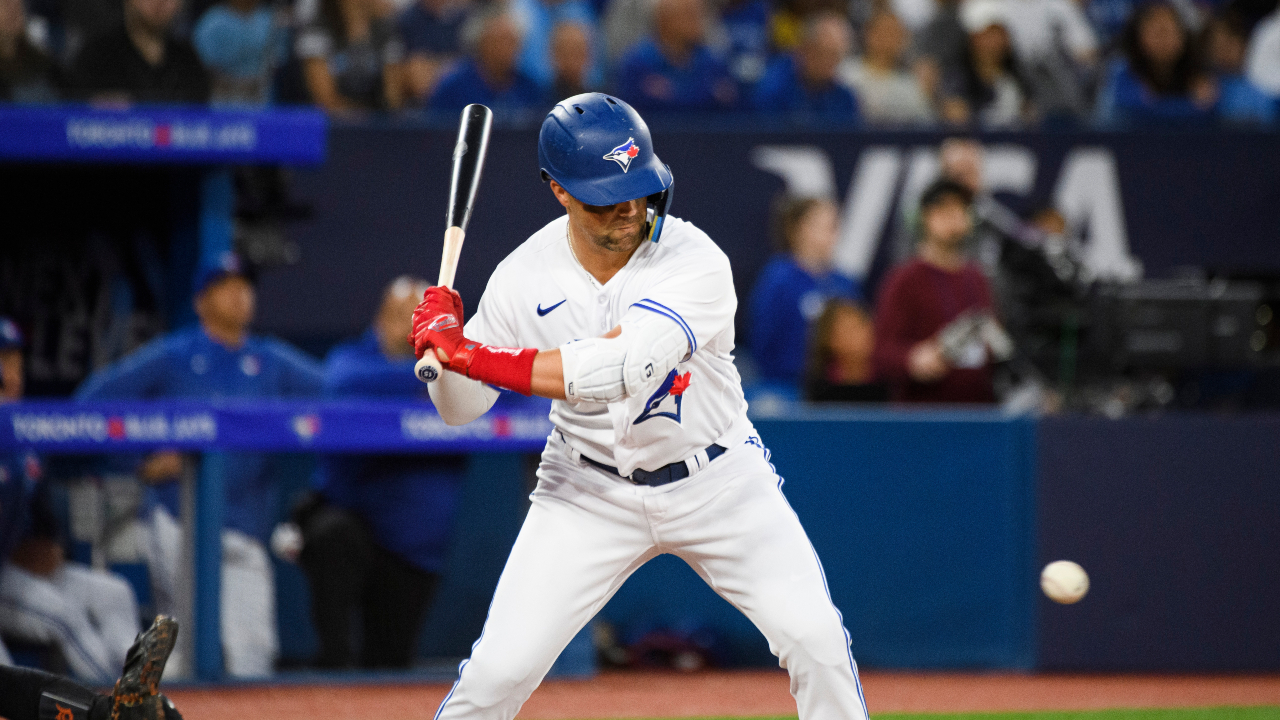
TORONTO – The Toronto Blue Jays entered the 2023 season as a team projected to have its share of strengths, but second base never looked like it would be one of them.
Whit Merrifield, Cavan Biggio and Santiago Espinal bring value in their own ways, but all three are complementary players best suited to hitting at or near the bottom of the lineup. None of them have ever been seen as primary drivers of Toronto’s offensive success.
Despite their lack of star power, the expectation coming into the year was that by mixing and matching the trio, the Blue Jays would be able to extract solid, if unspectacular, production from the keystone.
So far that hasn’t been the case as the Blue Jays’ trio of second baseman haven’t exactly exploded out of the gate. Through 19 games, the team is getting a .164/.240/.194 line from the position – good for a 26 wRC+.
It’s too early to panic about that production, but it’s worth taking a closer look at each of the players to see where the Blue Jays stand at the position.
Whit Merrifield
Merrifield has been the best of the bunch, especially lately, but he’s taken quite a few at-bats in the outfield, which has prevented him from establishing himself as the everyday second baseman.
Whether that would be a good thing for the Blue Jays is up for debate, anyway. As solid as Merrifield has been in recent games, he still projects as the weakest offensive producer of these three. FanGraphs’ ZiPS projection system predicts a rest-of-season wRC+ for him (95) below Biggio’s (104) and Espinal’s (96).
His work has been typical of what we’ve seen from him late in recent seasons. Merrifield is putting the ball in play plenty, but with a low walk rate (5.3%) and minimal power (.078) that make his sterling .314 batting average surprisingly empty.
That’s unlikely to change any time soon, as the veteran’s exit velocity and contact quality numbers sit at the bottom of the MLB leaderboards.
Not only is Merrifield unlikely to experience a power surge, his numbers will probably come back to earth considering the .282 xwOBA he’s generating — the worst mark of his career.
Merrifield should be able to provide a floor on what the Blue Jays get out of the second base position offensively. He’s unlikely to generate league-average production, but he makes enough contact and runs well enough that his numbers are unlikely to fall off a cliff.
Cavan Biggio
Biggio has more offensive upside than either Merrifield or Espinal — at least against right-handed pitching — but his combination of high strikeout rates and middling contact quality mean that when the wheels fall off, things get ugly.
In order to make his profile work at the plate, he needs to take plenty of walks and yank the odd home run down the right-field line. So far in 2023, neither of those things are happening enough to keep him afloat.
The good news for Biggio is that he’s experienced similar slumps to the one he’s going through now, but he also ended 2022 with the worst 11-game stretch of his career:
It’s been a while since the 28-year-old looked good at the dish, and his early-season struggles are well-earned as his xwOBA (.228) almost exactly matches his actual wOBA (.230).
His strikeout rate (33.3%) is the scariest part of his early-season statistical profile. Like with his overall production, we’ve seen similar stretches from him, but he ended 2022 on a grim note.
You’d have to be pretty bullish on Biggio to think he’ll live up to his above-average projections from here, considering he’s hit .152/.271/.261 since September.
Santiago Espinal
On first glance, Espinal’s numbers look extremely improbable, as he’s hitting just .114/.162/.200 despite his excellent strikeout rate (10.8%).
The 28-year-old has put 30 balls into play and has just three hits to show for it, which seems like an absurd statistical anomaly. Although the infielder has never been known to hit the ball hard, a BABIP of .100 would seem to indicate an absurd level of bad luck.
Although that’s the case to some extent, the balls coming off Espinal’s bat simply aren’t dangerous. His xBA (.145) ranks dead last among 286 players with at least 25 balls in play, and it’s only a touch above his real number.
When Espinal is at his best, he sprays soft liners around the diamond in front of opposing outfielders. This season, he’s been pounding the ball into the dirt instead.
There’s reason to believe that this is a funk he can shake out of, though, as he’s had multiple similar stretches struggling with ground balls in the past.
As long as Espinal continues to put balls in play at an elite rate, he’s a threat to go on a heater where hits fall in for him at an unusually high clip. His numbers are ugly, but this looks more like a temporary slump than something fundamentally wrong with his approach.
Believing that this trio could produce palatable results if rotated to hunt favourable matchups was a defensible point of view coming into the season. That hasn’t been the case yet — and it looks less and less like it will be.
Although the trio the Blue Jays have in-house is almost sure to improve from their brutal start to the season, if the team is hoping for offensive production from the keystone that’s average or better, they likely need to look elsewhere.




